Introduction
In a world where luxury and extravagance often collide, the quest for the most expensive thing becomes a tantalizing pursuit. From rare gems to lavish mansions, the possibilities seem endless. But what truly reigns as the epitome of opulence? Let’s delve into the realms of wealth and prestige to uncover the answer.
Unraveling the Mysteries of Extravagance
Diamonds: Shining Beacons of Luxury
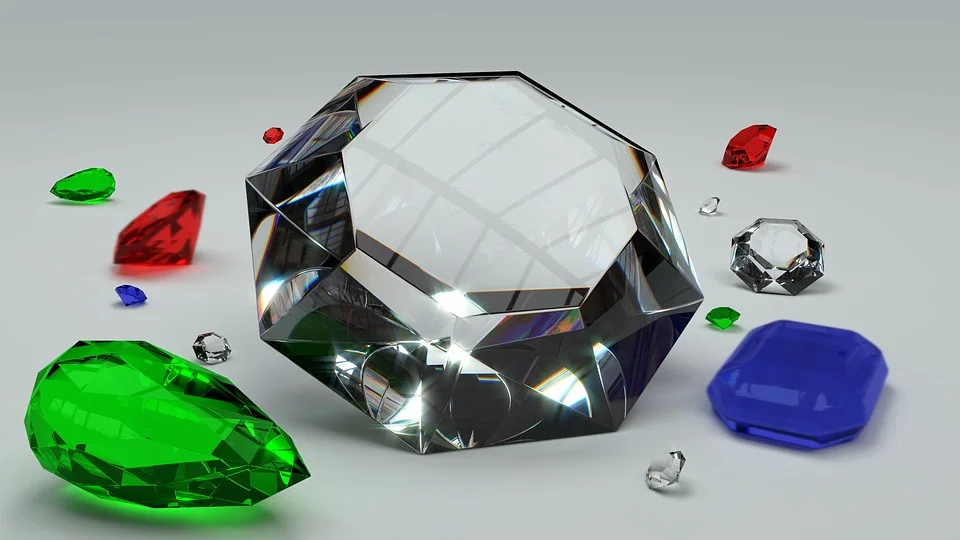
Diamonds have long been revered as symbols of wealth and status. Their allure transcends generations, captivating hearts with their brilliance and rarity. From the iconic Hope Diamond to the mesmerizing Pink Star, these gems command astronomical prices, making them coveted treasures in the world of luxury. Is The Most Expensive Thing In The World.
Why Diamonds Are So Expensive
Diamonds command high prices due to a combination of factors that contribute to their rarity, desirability, and enduring value. Is The Most Expensive Thing In The World.
- Rarity: Diamonds are naturally occurring gemstones formed deep within the Earth’s mantle over millions of years. The geological processes required to create diamonds are incredibly rare, making them inherently scarce.
- Durability: Diamonds are one of the hardest substances known to man, scoring a 10 on the Mohs scale of mineral hardness. Their exceptional durability ensures that they retain their brilliance and beauty for generations, further enhancing their value.
- Brilliance and Beauty: Diamonds possess unique optical properties that give them unparalleled brilliance and sparkle. The way they interact with light, refracting and reflecting it, creates the mesmerizing sparkle that has captivated hearts for centuries.
- Symbolism: Diamonds have long been associated with love, commitment, and prestige. They are often used in engagement rings and other significant jewelry pieces, symbolizing eternal love and enduring beauty.
- Mining Costs: The process of mining diamonds is labor-intensive and costly, requiring significant investment in infrastructure and technology. Additionally, diamonds are often found in remote and inhospitable locations, further increasing the cost of extraction.
- Labor and Expertise: Once mined, diamonds must be cut, polished, and graded by skilled artisans and gemologists. The craftsmanship required to transform rough diamonds into exquisite gemstones adds value to the final product.
- Market Demand: Diamonds have a global market with consistent demand from consumers around the world. The enduring popularity of diamonds as symbols of love, status, and luxury ensures a steady demand, which helps sustain their high prices.
- Marketing and Branding: Diamond companies invest heavily in marketing and branding efforts to promote the desirability of diamonds. Iconic marketing campaigns, such as “A Diamond is Forever,” have cemented diamonds as timeless symbols of romance and commitment.
Overall, the combination of rarity, durability, symbolism, and market demand contributes to the high price of diamonds, making them one of the most sought-after and valuable gemstones Is The Most Expensive Thing In The World.
Real Estate: Palaces of Grandeur

Luxury real estate stands as a testament to opulence, with sprawling mansions and breathtaking estates commanding staggering prices. From the opulent mansions of Beverly Hills to the lavish penthouses of Manhattan, these properties epitomize the pinnacle of extravagance, offering unparalleled comfort and exclusivity. Is The Most Expensive Thing In The World
Why Real Estate Is So Expensive
Real estate prices can vary significantly depending on location, demand, and various other factors. Here are several reasons why real estate can be expensive: Is The Most Expensive Thing In The World.,
- Location: The old adage “location, location, location” holds true in real estate. Properties in desirable locations, such as city centers, waterfronts, or prestigious neighborhoods, tend to command higher prices due to their proximity to amenities, schools, employment opportunities, and cultural attractions.
- Scarcity of Land: In densely populated areas, land available for development is limited, driving up the prices of available properties. As urban areas continue to expand and populations grow, the demand for land increases, leading to higher real estate prices.
- Market Demand: High demand for housing in certain areas can result in bidding wars and inflated prices. Factors such as population growth, economic prosperity, and migration patterns can contribute to increased demand for housing, pushing prices upwards.
- Investment Potential: Real estate is often seen as a solid investment with the potential for long-term appreciation. Investors may be willing to pay premium prices for properties they believe will increase in value over time, leading to higher prices in competitive markets.
- Development Costs: The cost of developing and constructing real estate projects, including land acquisition, permits, materials, labor, and infrastructure, can be substantial. These costs are often passed on to buyers in the form of higher property prices.
- Government Regulations: Zoning laws, building codes, and other government regulations can impact the cost of real estate development. Compliance with these regulations may require additional time and resources, which can contribute to higher property prices.
- Interest Rates: Low-interest rates can stimulate demand for real estate by making mortgage financing more affordable. However, low-interest rates can also lead to increased competition among buyers, driving up prices in hot housing markets.
- Supply Constraints: In some markets, there may be a shortage of available housing inventory relative to demand. This imbalance between supply and demand can lead to increased competition among buyers and higher prices for available properties.
- Quality and Amenities: Properties with desirable features, such as high-quality construction, modern amenities, scenic views, or proximity to parks and recreational facilities, tend to command higher prices due to their perceived value and appeal to buyers.
Overall, the interplay of factors such as location, demand, investment potential, development costs, government regulations, and market dynamics all contribute to the high cost of real estate in many markets around the world. Is The Most Expensive Thing In The World
Art: Masterpieces of Value

Art has long been a bastion of wealth, with iconic paintings fetching astronomical sums at auction houses around the world. From the enigmatic works of da Vinci to the vibrant creations of Picasso, these masterpieces transcend mere aesthetics, embodying the essence of cultural significance and historical value. Is The Most Expensive Thing In The World
Why Art Is So Expensive
Art often commands high prices due to a combination of factors that contribute to its cultural significance, historical value, and aesthetic appeal. Here are several reasons why art can be expensive: Is The Most Expensive Thing In The World.
- Scarcity and Rarity: Many artworks are one-of-a-kind creations, making them inherently rare and valuable. As a result, artworks by renowned artists or from specific periods or movements can command high prices due to their scarcity in the market.
- Artist Reputation and Prestige: The reputation and prestige of the artist play a significant role in determining the value of an artwork. Established artists with a proven track record of success, critical acclaim, and institutional recognition often command higher prices for their works.
- Artistic Merit and Quality: The artistic merit and quality of an artwork, including its aesthetic appeal, craftsmanship, and conceptual depth, can influence its perceived value and desirability among collectors and investors.
- Historical Significance: Artworks that hold historical significance or cultural relevance may command higher prices due to their importance in shaping art history or reflecting significant historical events, movements, or ideologies.
- Provenance and Ownership History: The provenance, or documented ownership history, of an artwork can impact its value and authenticity. Artworks with prestigious provenance, such as those from prominent collections or exhibited in major museums, may fetch higher prices at auction.
- Market Demand and Trends: Market demand and trends can significantly influence the prices of artworks. Factors such as collector preferences, art market speculation, and auction house dynamics can drive up prices for certain artists, genres, or styles.
- Art Market Infrastructure: The infrastructure of the art market, including auction houses, galleries, dealers, and art fairs, plays a crucial role in facilitating the buying and selling of artworks. These intermediaries often charge commissions or fees, which can contribute to the overall cost of acquiring art.
- Investment Potential: Art has historically been considered a store of value and a hedge against inflation, attracting investors seeking alternative assets. Artworks with investment potential or provenance may command higher prices from investors looking to diversify their portfolios.
- Emotional and Cultural Value: Art holds significant emotional and cultural value for collectors, enthusiasts, and communities. Artworks that evoke strong emotions, challenge conventions, or contribute to cultural discourse may be valued more highly by collectors and institutions.
Overall, the interplay of factors such as scarcity, artist reputation, artistic merit, historical significance, market demand, and investment potential all contribute to the high cost of art in the global art market. Is The Most Expensive Thing In The World
Supercars: Speed and Luxury Combined

For automotive enthusiasts, nothing epitomizes luxury quite like a supercar. With sleek designs and blistering performance, these vehicles represent the epitome of automotive engineering and craftsmanship. From the iconic Bugatti Veyron to the futuristic McLaren P1, these marvels of technology command jaw-dropping prices, offering a glimpse into the world of high-octane luxury. Is The Most Expensive Thing In The World
Why Supercars Are So Expensive
Supercars command high prices due to a combination of factors that contribute to their exceptional performance, engineering prowess, and exclusivity. Here are several reasons why supercars can be expensive: Is The Most Expensive Thing In The World.
- Advanced Engineering and Technology: Supercars are meticulously engineered to deliver exceptional performance, speed, and handling. They feature cutting-edge technologies, lightweight materials, and aerodynamic designs that push the boundaries of automotive engineering. The research and development costs associated with designing and testing these advanced technologies contribute to the high price tag of supercars.
- Exotic Materials and Components: Supercars often incorporate exotic materials such as carbon fiber, titanium, and lightweight alloys to reduce weight and improve performance. These high-quality materials are more expensive to manufacture and process than traditional automotive materials, adding to the cost of production.
- Handcrafted Construction: Many supercars are handcrafted by skilled artisans and technicians, adding a level of craftsmanship and attention to detail that is unmatched in mass-produced vehicles. The labor-intensive nature of handcrafted construction increases the production costs of supercars, contributing to their high prices.
- Limited Production Runs: Supercars are often produced in limited numbers to maintain exclusivity and desirability among collectors and enthusiasts. Limited production runs result in higher demand and competition among buyers, allowing manufacturers to command premium prices for their limited-edition models.
- Brand Prestige and Heritage: The reputation and heritage of the supercar manufacturer play a significant role in determining its price. Established brands with a rich history of motorsport success, innovation, and engineering excellence often command higher prices for their vehicles due to their brand prestige and cachet.
- Performance and Exclusivity: Supercars offer unparalleled performance, speed, and driving dynamics that set them apart from ordinary vehicles. Their exclusivity and rarity appeal to automotive enthusiasts who are willing to pay a premium for the thrill of owning and driving a high-performance supercar.
- Customization and Personalization: Many supercar manufacturers offer extensive customization options, allowing buyers to tailor their vehicles to their individual preferences and specifications. Customization options range from paint colors and interior trims to performance upgrades and bespoke features, adding to the overall cost of the vehicle.
- High Import Duties and Taxes: In some countries, supercars are subject to high import duties, taxes, and luxury taxes, which can significantly inflate their retail prices. These additional costs are passed on to consumers, making supercars even more expensive in certain markets.
Overall, the combination of advanced engineering, exotic materials, limited production runs, brand prestige, performance, and exclusivity all contribute to the high cost of supercars, making them coveted symbols of automotive excellence and luxury. Is The Most Expensive Thing In The World
Yachts: Sailing the Seas in Style
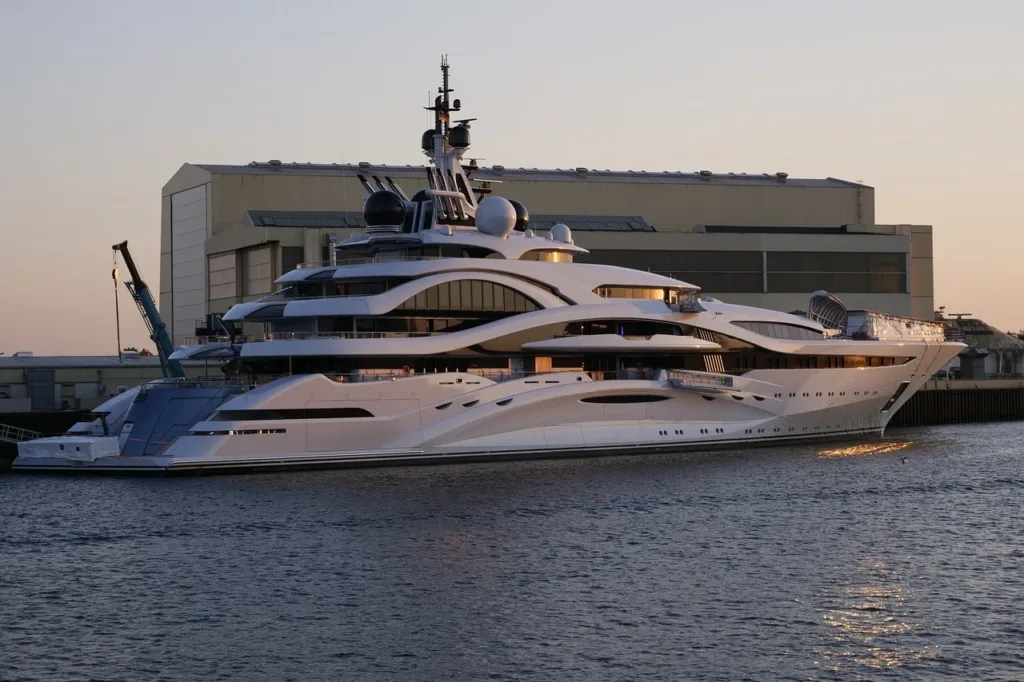
For those seeking the ultimate in luxury travel, nothing compares to the opulence of a superyacht. With lavish amenities and unrivaled comfort, these floating palaces offer a glimpse into a world of indulgence and extravagance. From the sprawling decks to the lavish interiors, every aspect of a superyacht is designed to cater to the whims of the ultra-wealthy. Is The Most Expensive Thing In The World
Why Yachts Are So Expensive
Yachts command high prices due to a combination of factors that contribute to their luxury, craftsmanship, and exclusivity. Here are several reasons why yachts can be expensive: Is The Most Expensive Thing In The World.
- Custom Design and Construction: Yachts are often custom-designed and built to meet the specific preferences and requirements of their owners. The process of designing and constructing a yacht involves intricate engineering, meticulous craftsmanship, and high-quality materials, all of which contribute to the overall cost of the vessel.
- Size and Features: Yachts come in a range of sizes, from smaller pleasure boats to mega yachts that stretch hundreds of feet in length. Larger yachts typically feature more amenities and luxurious features, such as multiple decks, swimming pools, helipads, and onboard cinemas, which add to their cost.
- High-Quality Materials: Yachts are constructed using high-quality materials such as marine-grade aluminum, fiberglass, and exotic hardwoods. These materials are durable, weather-resistant, and aesthetically pleasing, but they also come with a higher price tag compared to standard boat-building materials.
- Customization and Personalization: Owners often customize their yachts to reflect their individual tastes and preferences. Customization options may include interior design, layout configurations, and onboard amenities, all of which require additional time, labor, and resources, increasing the cost of the yacht.
- Maintenance and Operating Costs: Owning a yacht entails significant ongoing expenses, including maintenance, repairs, crew salaries, insurance, and fuel costs. Maintenance costs can be particularly high for larger yachts with complex systems and equipment, further adding to the overall cost of ownership.
- Exclusivity and Prestige: Yachts are symbols of wealth, luxury, and prestige, and owning one is considered a status symbol among the ultra-wealthy. The exclusivity of yacht ownership, combined with the ability to travel in style and comfort, contributes to the high demand and premium prices of luxury yachts.
- Resale Value and Appreciation: While yachts depreciate over time like any other asset, certain models and brands may retain their value or even appreciate in value over time. Rare or vintage yachts, as well as those with prestigious pedigrees or celebrity ownership history, may command higher prices on the resale market.
- Regulatory Compliance: Yacht construction and operation are subject to stringent regulatory requirements and safety standards enforced by maritime authorities around the world. Compliance with these regulations may require additional design modifications, equipment upgrades, and safety features, all of which can increase the cost of the yacht.
Overall, the combination of custom design, high-quality materials, customization options, maintenance costs, exclusivity, and regulatory compliance all contribute to the high cost of yachts, making them coveted possessions among the world’s elite. Is The Most Expensive Thing In The World
Jewelry: Adornments of Elegance

Beyond diamonds, the world of luxury jewelry offers a myriad of dazzling options for those with discerning tastes. From rare gemstones to exquisite designs, luxury jewelry is a testament to craftsmanship and artistry. Whether adorned with diamonds, emeralds, or sapphires, these pieces serve as timeless symbols of elegance and refinement. Is The Most Expensive Thing In The World
Why Jewelry Is So Expensive
Jewelry commands high prices due to a combination of factors that contribute to its craftsmanship, materials, and desirability. Here are several reasons why jewelry can be expensive: Is The Most Expensive Thing In The World.
- Precious Materials: Jewelry is often made from precious metals such as gold, silver, platinum, and palladium, which have intrinsic value due to their rarity and durability. The cost of these materials, especially when used in large quantities or combined with gemstones, contributes significantly to the overall price of the jewelry.
- Gemstones: Many pieces of jewelry feature gemstones such as diamonds, rubies, emeralds, and sapphires, which are prized for their rarity, beauty, and brilliance. The cost of gemstones varies depending on factors such as size, clarity, color, and cut, with larger, high-quality stones commanding higher prices.
- Craftsmanship and Design: Fine jewelry requires skilled craftsmanship and meticulous attention to detail to create intricate designs and settings. Jewelry artisans spend countless hours handcrafting each piece, from shaping metal to setting gemstones, resulting in labor-intensive production processes that contribute to the overall cost of the jewelry.
- Brand Reputation and Prestige: Established jewelry brands with a long history of craftsmanship, innovation, and luxury often command higher prices for their products due to their brand reputation and prestige. Consumers are willing to pay a premium for jewelry from renowned brands known for their quality, design, and exclusivity.
- Customization and Personalization: Many jewelry pieces are customized or personalized to meet the specific preferences and tastes of the buyer. Customization options may include choosing specific gemstones, metals, or design elements, as well as incorporating sentimental or symbolic details, all of which can increase the cost of the jewelry.
- Limited Editions and Collections: Some jewelry pieces are produced in limited editions or as part of exclusive collections, adding to their rarity and desirability. Limited availability and exclusivity can drive up demand and prices for these special pieces among collectors and enthusiasts.
- Quality and Certification: High-quality jewelry undergoes rigorous testing and certification to ensure its authenticity, purity, and value. Certified diamonds, for example, come with grading reports from reputable gemological laboratories, providing buyers with assurance of their quality and value, which can justify higher price points.
- Market Demand and Trends: Consumer demand and market trends play a significant role in determining the prices of jewelry. Factors such as changing fashion trends, celebrity endorsements, and cultural influences can drive demand for certain styles or designs, leading to fluctuations in prices within the jewelry market.
Overall, the combination of precious materials, gemstones, craftsmanship, brand reputation, customization options, limited editions, and market demand all contribute to the high cost of jewelry, making it a coveted and timeless investment for many consumers. Is The Most Expensive Thing In The World
Wines and Spirits: Elixir of Luxury
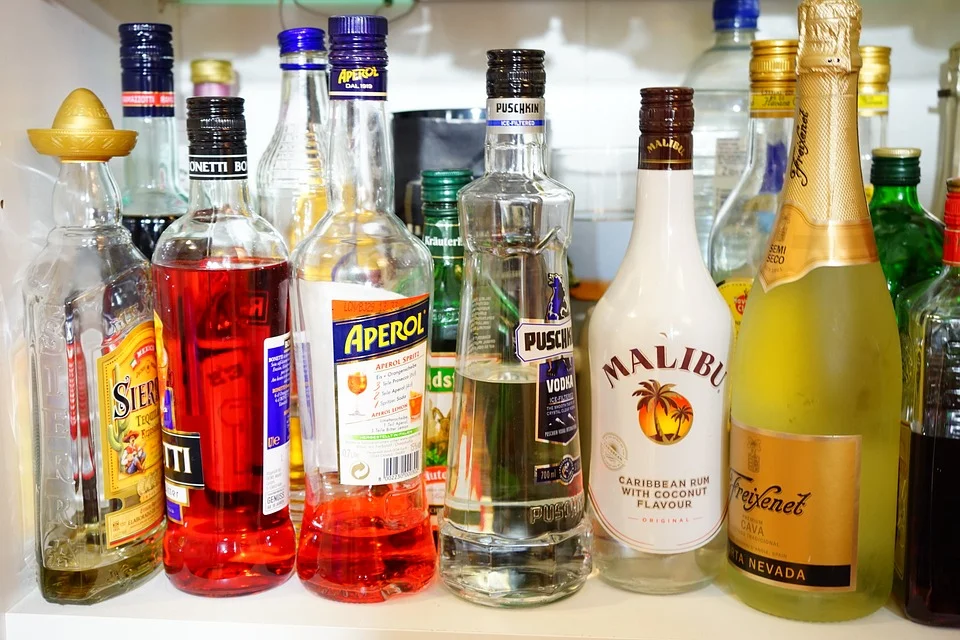
For connoisseurs of fine dining, rare wines and spirits hold a special allure. From vintage wines to aged whiskies, these libations offer a taste of luxury unlike any other. With their intricate flavors and storied histories, rare wines and spirits are prized possessions among collectors and enthusiasts alike. Is The Most Expensive Thing In The World
Why Wines and Spirits Are So Expensive
Wines and spirits command high prices due to a combination of factors that contribute to their quality, rarity, and craftsmanship. Here are several reasons why wines and spirits can be expensive: Is The Most Expensive Thing In The World.
- Quality of Ingredients: Fine wines and spirits are crafted from high-quality ingredients, including carefully selected grapes, grains, and botanicals. The quality of these ingredients significantly influences the flavor, aroma, and overall character of the final product, and sourcing premium ingredients can increase production costs.
- Aging Process: Many wines and spirits undergo a prolonged aging process to develop complex flavors and aromas. The cost of aging includes storage, maintenance, and the opportunity cost of tying up capital in inventory for an extended period. Older wines and spirits, which have been aged for longer periods, often command higher prices due to their rarity and maturity.
- Production Methods: The production methods used to craft wines and spirits can vary widely, from traditional techniques passed down through generations to modern innovations that optimize flavor extraction and consistency. Handcrafted or artisanal production methods, which involve more labor-intensive processes, can result in higher production costs and, consequently, higher prices for the final product.
- Brand Prestige and Reputation: Established brands with a long history of excellence, craftsmanship, and innovation often command higher prices for their wines and spirits due to their brand prestige and reputation. Consumers are willing to pay a premium for products from renowned brands known for their quality, consistency, and exclusivity.
- Limited Production and Rarity: Some wines and spirits are produced in limited quantities, either due to the scarcity of ingredients, the constraints of the production process, or intentional marketing strategies to create exclusivity. Limited production runs result in higher demand and competition among buyers, allowing producers to command premium prices for their rare and sought-after products.
- Appellation and Terroir: Wines are often labeled with specific appellations or regions of origin, which reflect the unique characteristics of the terroir, including soil composition, climate, and topography. Wines from prestigious appellations or terroirs, such as Bordeaux or Burgundy, often command higher prices due to their perceived quality, authenticity, and provenance.
- Awards and Accolades: Wines and spirits that receive awards and accolades from prestigious competitions, critics, and industry organizations often see a surge in demand and prices. Winning awards can validate the quality and craftsmanship of a product, increasing its value and desirability among consumers and collectors.
- Import Duties and Taxes: In many countries, wines and spirits are subject to import duties, excise taxes, and other regulatory fees, which can significantly increase their retail prices. Importers and retailers pass these additional costs on to consumers, contributing to the overall cost of wines and spirits.
Overall, the combination of quality ingredients, aging processes, production methods, brand prestige, limited production, appellation, awards, and regulatory costs all contribute to the high prices of wines and spirits, making them coveted and luxurious indulgences for enthusiasts and connoisseurs alike. Is The Most Expensive Thing In The World
Timepieces: Luxury Beyond Measure
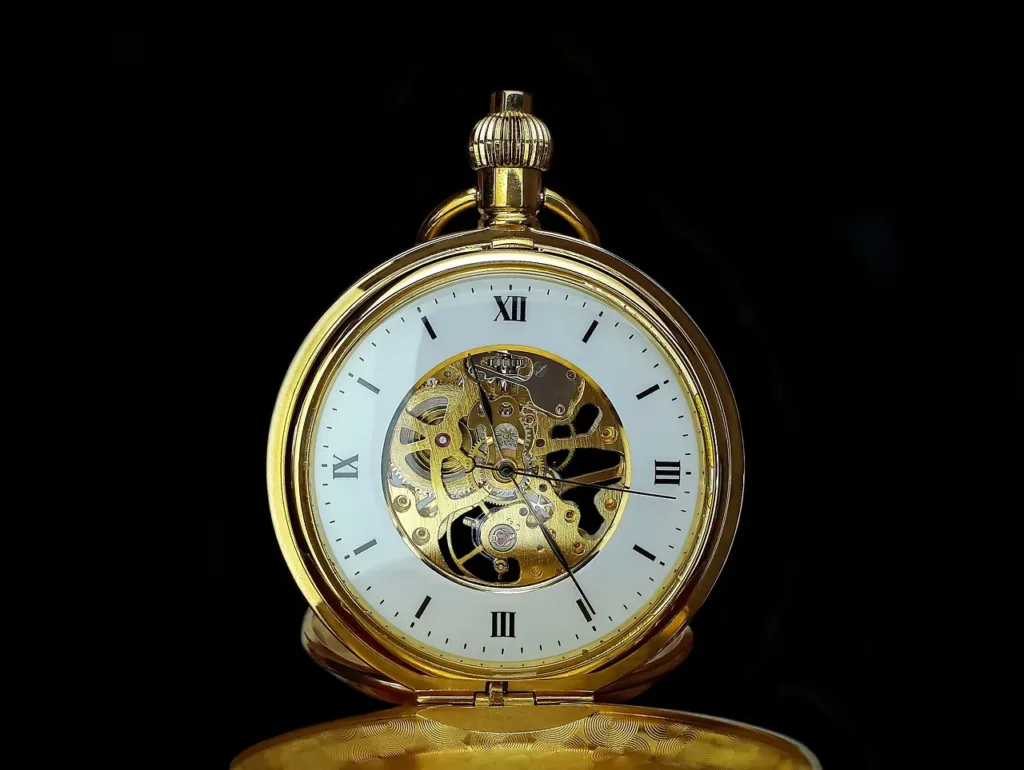
A luxury timepiece is more than just a way to tell time – it’s a statement of style and sophistication. From Swiss watches to haute horlogerie, these precision-crafted timepieces are coveted by collectors around the world. With their intricate complications and meticulous craftsmanship, luxury watches are a testament to the artistry of the watchmaking industry. Is The Most Expensive Thing In The World
Why Timepieces Are So Expensive
Timepieces, often referred to as luxury watches, command high prices due to a combination of factors that contribute to their craftsmanship, precision, and exclusivity. Here are several reasons why timepieces can be expensive: Is The Most Expensive Thing In The World.
- Precision Engineering: Luxury watches are meticulously engineered to achieve precise timekeeping and durability. They are often equipped with complex mechanical movements composed of hundreds of individual components, which are assembled with utmost precision by skilled watchmakers.
- High-Quality Materials: Luxury watches are crafted from premium materials such as stainless steel, gold, platinum, and titanium. These materials are chosen for their durability, corrosion resistance, and aesthetic appeal, but they also come with a higher price tag compared to standard watch materials.
- Handcrafted Construction: Many luxury watches are handcrafted by master artisans and watchmakers, who dedicate hours of labor to meticulously assemble, adjust, and finish each timepiece. Handcrafted construction adds a level of craftsmanship and attention to detail that cannot be replicated by mass production methods.
- Complications and Features: Luxury watches often feature intricate complications and additional features beyond basic timekeeping, such as chronographs, moon phases, tourbillons, and perpetual calendars. These complications require advanced engineering and precision manufacturing, adding to the complexity and cost of the watch.
- Brand Heritage and Prestige: Established watch brands with a long history of excellence and innovation often command higher prices for their timepieces due to their brand heritage and prestige. Consumers are willing to pay a premium for watches from renowned brands known for their quality, craftsmanship, and heritage.
- Limited Editions and Exclusivity: Some luxury watches are produced in limited editions or as part of exclusive collections, adding to their rarity and desirability. Limited availability and exclusivity can drive up demand and prices for these special timepieces among collectors and enthusiasts.
- Certification and Quality Control: Luxury watches undergo rigorous testing, certification, and quality control procedures to ensure their accuracy, reliability, and longevity. Certified watches come with guarantees of quality and performance, which can justify higher prices for consumers seeking assurance of value.
- Resale Value and Investment: Certain luxury watches hold their value well over time and may even appreciate in value due to factors such as rarity, brand prestige, and historical significance. As a result, some consumers view luxury watches as investment pieces, willing to pay higher prices upfront for the potential return on investment in the future.
Overall, the combination of precision engineering, high-quality materials, handcrafted construction, brand heritage, limited editions, certification, and investment potential all contribute to the high prices of luxury timepieces, making them coveted and timeless symbols of style and sophistication. Is The Most Expensive Thing In The World
Fashion: Haute Couture and High Fashion
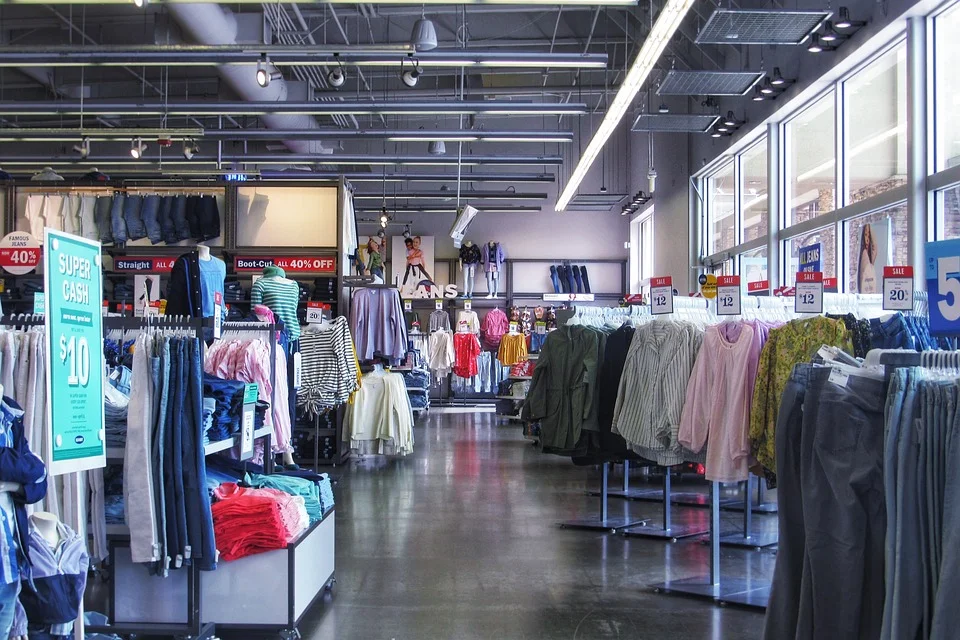
The world of high fashion is synonymous with luxury and extravagance, with couture creations commanding staggering prices. From the iconic fashion houses of Paris to the avant-garde designers of Milan, haute couture represents the pinnacle of sartorial excellence. With their exquisite craftsmanship and attention to detail, luxury fashion pieces are coveted by fashionistas and collectors alike. Is The Most Expensive Thing In The World
Why Fashion Is So Expensive
Fashion items, including clothing, accessories, and footwear, often come with high price tags due to various factors that contribute to their quality, design, and exclusivity. Here are several reasons why fashion can be expensive: Is The Most Expensive Thing In The World.
- Quality of Materials: High-end fashion brands use premium materials such as silk, cashmere, leather, and fine cotton in their products. These materials are carefully sourced for their superior quality, durability, and comfort, which often come with higher production costs.
- Craftsmanship and Artistry: Luxury fashion items are often crafted with meticulous attention to detail and superior craftsmanship. Skilled artisans and technicians employ traditional techniques and innovative processes to create intricate designs, patterns, and finishes, adding value to the final product.
- Designer Brand Prestige: Established fashion designers and luxury brands have built a reputation for excellence, innovation, and creativity over the years. Consumers are willing to pay a premium for products from renowned brands known for their quality, style, and exclusivity, contributing to higher price points.
- Limited Editions and Exclusivity: Some fashion items are produced in limited editions or as part of exclusive collections, adding to their rarity and desirability. Limited availability and exclusivity can drive up demand and prices for these special pieces among fashion enthusiasts and collectors.
- Fashion Shows and Marketing: High-end fashion brands invest heavily in marketing and promotion, including fashion shows, advertising campaigns, and celebrity endorsements. These marketing efforts help create buzz, generate demand, and justify premium prices for fashion items in the eyes of consumers.
- Innovative Design and Technology: Luxury fashion brands often invest in research and development to innovate new materials, technologies, and manufacturing processes. Cutting-edge design, engineering, and technology contribute to the uniqueness, functionality, and performance of fashion products, warranting higher prices.
- Global Supply Chain and Distribution: Luxury fashion brands operate global supply chains and distribution networks to source materials, manufacture products, and distribute them to retailers and consumers worldwide. The complexity and scale of these operations incur additional costs, which are reflected in the retail prices of fashion items.
- Brand Heritage and Legacy: Many luxury fashion brands have a rich heritage and legacy dating back decades or even centuries. The history, craftsmanship, and cultural significance associated with these brands add to their allure and value, commanding premium prices for their products.
Overall, the combination of quality materials, craftsmanship, brand prestige, limited editions, marketing, innovation, global supply chains, and brand heritage all contribute to the high prices of fashion items, making them aspirational and exclusive symbols of style and luxury. Is The Most Expensive Thing In The World
Electronics: Technological Marvels

In today’s digital age, luxury electronics have become sought-after status symbols among the ultra-wealthy. From diamond-encrusted smartphones to solid gold laptops, these technological marvels push the boundaries of innovation and design. With their exclusive features and limited availability, luxury electronics offer a glimpse into the cutting edge of technology and style. Is The Most Expensive Thing In The World.
Why Electronics Are So Expensive
Electronics, ranging from smartphones and laptops to televisions and gaming consoles, often come with high price tags due to various factors that contribute to their design, functionality, and manufacturing process. Here are several reasons why electronics can be expensive: Is The Most Expensive Thing In The World.
- Research and Development: Electronics companies invest heavily in research and development (R&D) to innovate new technologies and improve existing products. The costs associated with R&D, including hiring skilled engineers, conducting experiments, and prototyping, are factored into the final price of electronic devices.
- Advanced Components: Electronic devices are composed of advanced components such as processors, memory chips, sensors, and displays. These components are manufactured using cutting-edge technologies and materials, which can be costly to produce and source.
- Quality Control and Testing: Manufacturers implement stringent quality control measures and testing procedures to ensure the reliability, durability, and safety of electronic devices. Quality control adds to the production costs, as defective units must be identified and rectified before the product reaches the market.
- Customization and Features: Consumers expect electronic devices to offer a wide range of features and customization options to suit their needs and preferences. Integrating additional features, such as high-resolution displays, advanced cameras, and biometric sensors, increases the complexity and cost of manufacturing electronic devices.
- Brand Reputation and Marketing: Established electronics brands invest in marketing and advertising campaigns to promote their products and build brand loyalty. The costs associated with branding, advertising, and distribution are reflected in the retail prices of electronic devices from well-known brands.
- Supply Chain and Logistics: The global supply chain and logistics network for electronics involve sourcing raw materials, manufacturing components, assembling products, and distributing them to retailers and consumers worldwide. Transportation, import/export duties, and inventory management contribute to the overall cost of electronics.
- Economies of Scale: While mass production can help reduce manufacturing costs per unit, certain electronic devices may have limited production runs or specialized components, resulting in higher production costs. Limited economies of scale can drive up prices for niche or specialized electronic products.
- Regulatory Compliance: Electronics must comply with regulatory standards and certifications mandated by governments and industry organizations to ensure product safety, electromagnetic compatibility, and environmental sustainability. Compliance with regulations adds administrative costs and testing expenses, which are passed on to consumers.
Overall, the combination of R&D investment, advanced components, quality control, customization, branding, supply chain logistics, economies of scale, and regulatory compliance all contribute to the high prices of electronics. While consumers may perceive electronics as expensive, the cost often reflects the value and functionality offered by these innovative and indispensable devices. Is The Most Expensive Thing In The World
Private Islands: Secluded Retreats
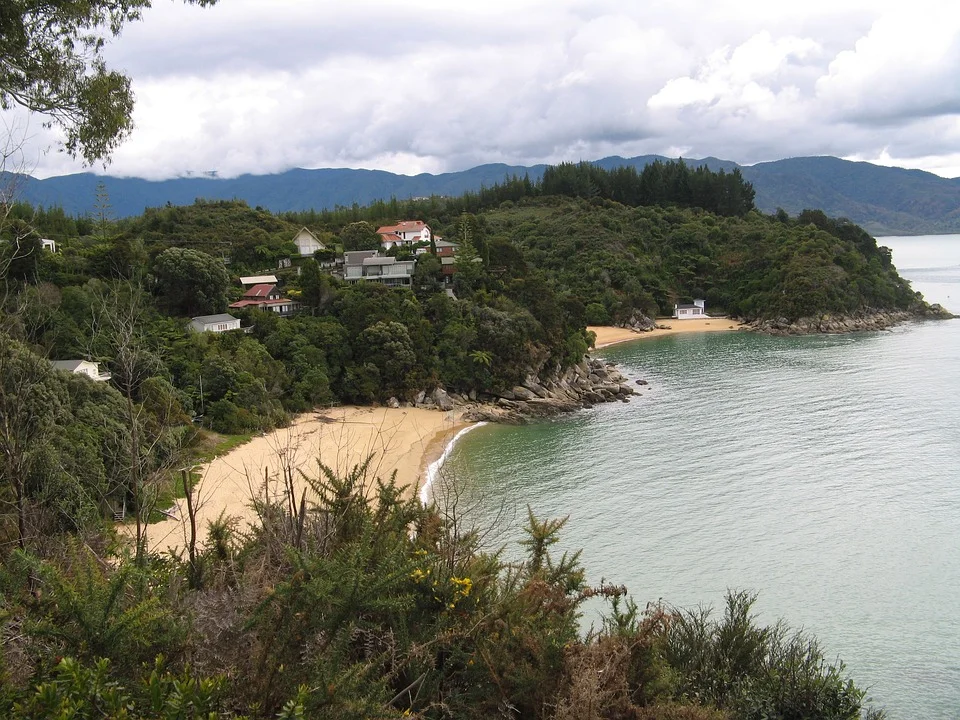
For those seeking the ultimate escape, nothing compares to the allure of a private island. With their pristine beaches and secluded shores, these exclusive retreats offer unparalleled privacy and luxury. From the crystal-clear waters of the Caribbean to the rugged coastlines of Greece, private islands are the epitome of exclusivity and indulgence. Is The Most Expensive Thing In The World.
Why Private Islands Are So Expensive
Private islands command high prices due to a combination of factors that contribute to their exclusivity, location, and desirability. Here are several reasons why private islands can be expensive: Is The Most Expensive Thing In The World.
- Location and Scenery: Many private islands are located in picturesque and idyllic settings, such as tropical paradises, secluded coastlines, or pristine wilderness areas. The natural beauty and serenity of these locations make them highly desirable among buyers seeking privacy and tranquility.
- Exclusivity and Privacy: Private islands offer unparalleled levels of exclusivity and privacy, allowing owners to escape the hustle and bustle of city life and enjoy a secluded retreat away from prying eyes. The rarity of private island ownership contributes to their prestige and high prices.
- Development Potential: Private islands often come with vast tracts of undeveloped land, offering endless opportunities for customization and development. Buyers may envision building luxury estates, resorts, or eco-friendly retreats on their private islands, which can justify the high cost of acquisition.
- Infrastructure and Amenities: Some private islands come equipped with existing infrastructure and amenities, such as waterfront villas, guest cottages, docks, helipads, and recreational facilities. The presence of these amenities adds value to the island and can justify higher prices for buyers seeking turnkey properties.
- Investment Potential: Private islands are considered unique and tangible assets with the potential for long-term appreciation. As land becomes scarcer and populations grow, the demand for private islands as exclusive retreats or investment properties increases, driving up prices in desirable locations.
- Lifestyle and Status: Private island ownership is often associated with wealth, luxury, and status, appealing to affluent individuals and celebrities seeking the ultimate symbol of success and achievement. The cachet of owning a private island can justify the high prices paid by buyers eager to showcase their lifestyle and status.
- Limited Supply and Demand: Private islands are finite and limited in supply, especially those located in prime locations with desirable amenities and natural features. High demand from wealthy buyers, coupled with limited availability, creates a competitive market where prices are driven upwards.
- Regulatory Considerations: The purchase of a private island may involve regulatory considerations such as zoning laws, environmental regulations, and land use restrictions. Compliance with these regulations may require additional due diligence and legal expenses, which can impact the overall cost of acquiring a private island.
Overall, the combination of location, exclusivity, development potential, infrastructure, investment potential, lifestyle appeal, limited supply, and regulatory considerations all contribute to the high prices of private islands, making them coveted and prestigious assets for discerning buyers. Is The Most Expensive Thing In The World
Aviation: Flying in Luxury
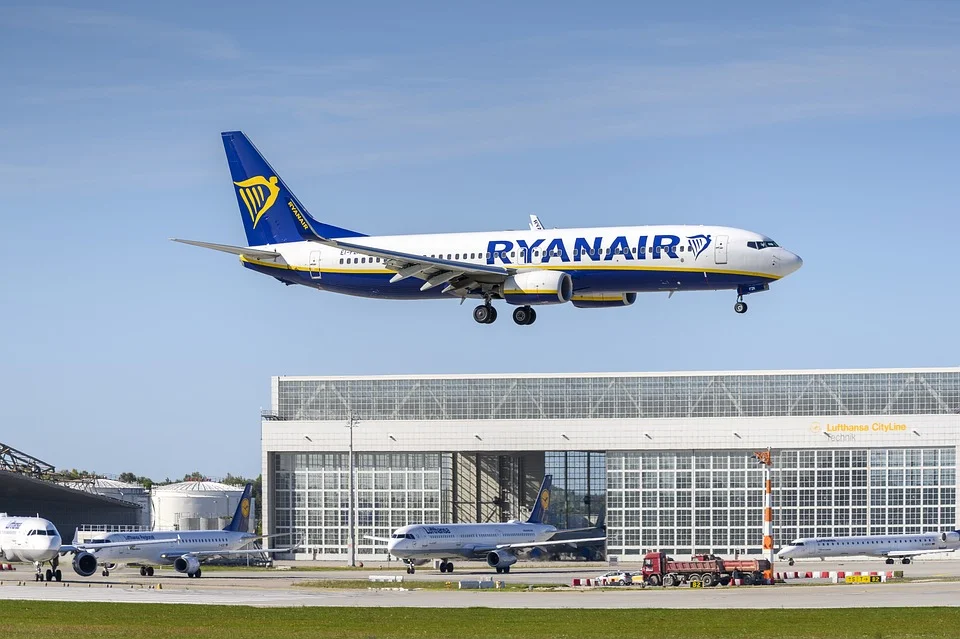
For jet setters and business moguls, private jets represent the ultimate in luxury travel. From sleek jets to opulent airliners, these flying palaces offer unmatched comfort and convenience. With their plush interiors and state-of-the-art amenities, private jets redefine the concept of luxury travel, allowing passengers to traverse the globe in style. Is The Most Expensive Thing In The World.
Why Aviation Is So Expensive
Aviation, including private jets, commercial airlines, and aviation-related services, often comes with high costs due to various factors that contribute to safety, technology, infrastructure, and operational expenses. Here are several reasons why aviation can be expensive: Is The Most Expensive Thing In The World.
- Aircraft Acquisition and Maintenance: The cost of acquiring and maintaining aircraft is significant, especially for commercial airlines and private jet owners. Aircraft prices vary depending on factors such as size, range, capacity, and technology. Additionally, regular maintenance, inspections, and repairs are necessary to ensure aircraft safety and airworthiness.
- Fuel Costs: Aviation fuel is a major expense for airlines and private jet operators. Jet fuel prices are subject to fluctuations in the global oil market, and fuel expenses can account for a significant portion of an airline’s operating costs. Fuel-efficient aircraft and fuel hedging strategies are employed to mitigate the impact of fuel price volatility.
- Safety Regulations and Compliance: Aviation is heavily regulated to ensure passenger safety and security. Airlines and operators must comply with stringent safety standards, maintenance requirements, and operational regulations enforced by aviation authorities. Compliance with safety regulations entails additional training, equipment, and administrative costs.
- Infrastructure and Airport Fees: The construction and maintenance of airports, runways, terminals, and air traffic control systems require substantial investment. Airlines and operators pay landing fees, gate fees, and other airport-related charges to utilize airport facilities and services, which contribute to the overall cost of aviation operations.
- Insurance and Liability: Aviation insurance premiums are high due to the inherent risks associated with flying. Insurers assess factors such as aircraft type, usage, safety record, and coverage limits when determining insurance premiums. Airlines and operators must also account for potential liability claims in their operating expenses.
- Technology and Innovation: Advancements in aviation technology drive up costs as airlines invest in modernizing their fleets with state-of-the-art aircraft, avionics, and inflight entertainment systems. Research and development efforts to improve fuel efficiency, reduce emissions, and enhance passenger comfort require substantial financial investment.
- Labor Costs: The aviation industry is labor-intensive, requiring skilled personnel such as pilots, flight attendants, mechanics, and ground crew. Labor costs, including salaries, benefits, training, and recruitment expenses, constitute a significant portion of an airline’s operating expenses.
- Market Competition and Pricing: Competition among airlines and operators influences ticket prices and service offerings. While low-cost carriers may offer budget-friendly fares, full-service airlines differentiate themselves with premium amenities, personalized services, and higher fares. Premium cabin products and luxury services contribute to the overall cost of aviation for passengers seeking enhanced travel experiences.
Overall, the combination of aircraft acquisition and maintenance, fuel costs, safety regulations, infrastructure fees, insurance, technology, labor costs, and market competition all contribute to the high expenses associated with aviation. Despite the high costs, aviation continues to be a vital mode of transportation and a catalyst for economic growth and global connectivity. Is The Most Expensive Thing In The World
Rare Metals and Minerals: Treasures of the Earth
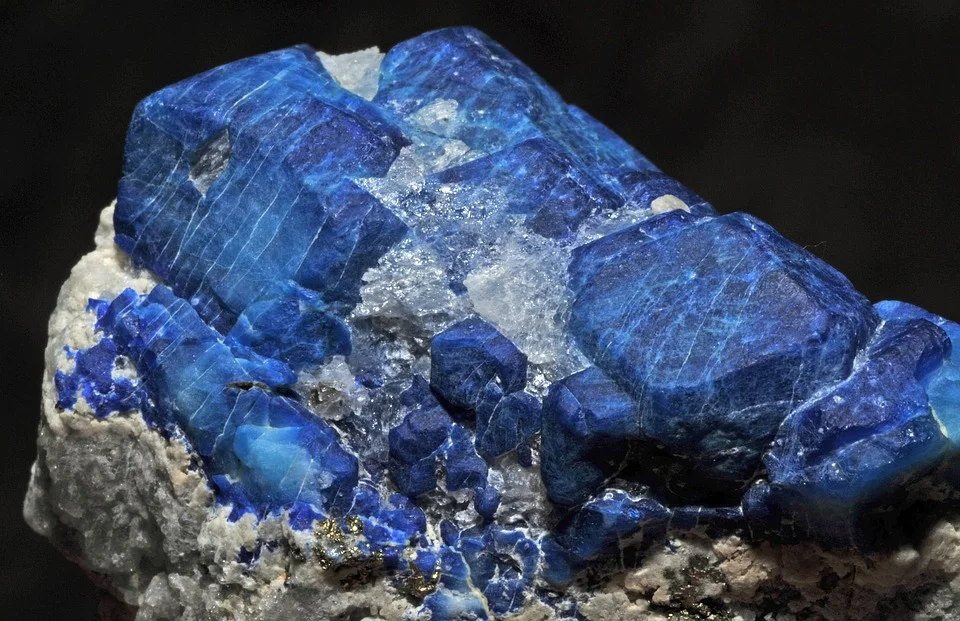
Beyond traditional luxury goods, rare metals and minerals hold a special allure for collectors and investors. From platinum to rhodium, these precious resources are prized for their scarcity and value. With their diverse applications and limited availability, rare metals and minerals are coveted commodities in the world of luxury and finance. Is The Most Expensive Thing In The World
Why Rare Metals and Minerals Are So Expensive
Rare metals and minerals command high prices due to their scarcity, unique properties, and essential role in various industries. Here are several reasons why rare metals and minerals can be expensive: Is The Most Expensive Thing In The World.
- Limited Supply: Rare metals and minerals are characterized by their scarcity in nature. They are often found in small quantities and concentrated in specific geological formations or regions. The limited supply of these materials makes them valuable commodities in high demand by industries such as technology, aerospace, and renewable energy.
- Critical Role in Technology: Rare metals and minerals play a critical role in the production of advanced technologies such as smartphones, electric vehicles, and renewable energy systems. They are used in components such as batteries, semiconductors, magnets, and catalysts, where their unique properties, such as conductivity, durability, and magnetism, are essential for performance.
- Complex Extraction Processes: Extracting rare metals and minerals from the earth’s crust often involves complex and expensive mining and processing techniques. Many rare metals and minerals are found in remote or environmentally sensitive areas, requiring significant investment in infrastructure, equipment, and environmental management to extract them sustainably.
- Geopolitical Factors: The geopolitical landscape can influence the availability and pricing of rare metals and minerals. Some countries have a monopoly or dominant position in the production of certain rare materials, leading to geopolitical tensions, trade disputes, and supply chain disruptions that can impact prices on the global market.
- Environmental Regulations: Mining and processing rare metals and minerals can have significant environmental impacts, such as habitat destruction, water pollution, and greenhouse gas emissions. Compliance with environmental regulations and sustainability standards adds costs to the production process, which may be passed on to consumers in the form of higher prices.
- Technological Advancements: Advances in technology and innovation drive demand for rare metals and minerals with specific properties or applications. As new technologies emerge and existing ones evolve, the demand for certain rare materials may increase, leading to higher prices as supply struggles to keep pace with demand.
- Investment and Speculation: Rare metals and minerals are often viewed as alternative investments by investors seeking diversification and potential returns. Speculative trading in rare metals and minerals futures and commodities markets can contribute to price volatility and drive up prices based on market sentiment and perceived scarcity.
- Global Economic Trends: Economic growth, industrial production, and infrastructure development drive demand for raw materials, including rare metals and minerals. Fluctuations in global economic conditions, such as supply chain disruptions, trade policies, and currency fluctuations, can impact prices for rare materials as demand patterns shift.
Overall, the combination of limited supply, critical technological roles, complex extraction processes, geopolitical factors, environmental regulations, technological advancements, investment speculation, and global economic trends all contribute to the high prices of rare metals and minerals, making them valuable and sought-after resources in today’s economy. Is The Most Expensive Thing In The World
FAQs (Frequently Asked Questions)
What is the most expensive thing ever sold?
The most expensive item ever sold is Leonardo da Vinci’s painting “Salvador Mundi,” which fetched a staggering $450.3 million at auction.
Are luxury items worth the price?
Luxury items often hold both intrinsic and extrinsic value, offering unparalleled quality, craftsmanship, and prestige. However, whether they are worth the price ultimately depends on individual preferences and priorities.
What makes something valuable in the luxury market?
Several factors contribute to the value of luxury goods, including rarity, craftsmanship, brand reputation, and historical significance.
Why are diamonds so expensive?
Diamonds are highly prized for their rarity, durability, and brilliance. Additionally, factors such as mining costs, labor, and marketing also contribute to their high price tag.
Who buys the most expensive items in the world?
The ultra-wealthy, including billionaires, celebrities, and collectors, are often the primary buyers of the most expensive items in the world.
What is the most expensive thing in the world right now?
The most expensive thing in the world varies depending on market conditions and individual valuations. However, items such as rare artworks, luxury real estate, and fine jewelry often command astronomical prices.
Conclusion
In a world where extravagance knows no bounds, the quest for the most expensive thing continues to captivate and inspire. From rare treasures to opulent estates, the possibilities are endless for those with discerning tastes and deep pockets. As we explore the realms of luxury and wealth, one thing remains certain – the pursuit of excellence knows no limits. Is The Most Expensive Thing In The World.
Is The Most Expensive Thing In The World













Is The Most Expensive Thing In The World.
Is The Most Expensive Thing In The World.

stocking and high heels
https://77volt.ru/bitrix/rk.php?goto=https://tubesweet.com/
http://cacourseprovider.com/login-check.php?aid=mzq3&d=12/20/16+4pm&old=https://tubesweet.com/
https://electron1.ru/bitrix/rk.php?goto=https://tubesweet.com/
http://socialmedik.com/?URL=https://tubesweet.com/
Hello! I’m at work browsing your blog from my new iphone! Just wanted to say I love reading your blog and look forward to all your posts! Keep up the outstanding work!
купить диплом преподавателя
https://postgresconf.org/users/james-hughes
купить диплом в новоалтайске